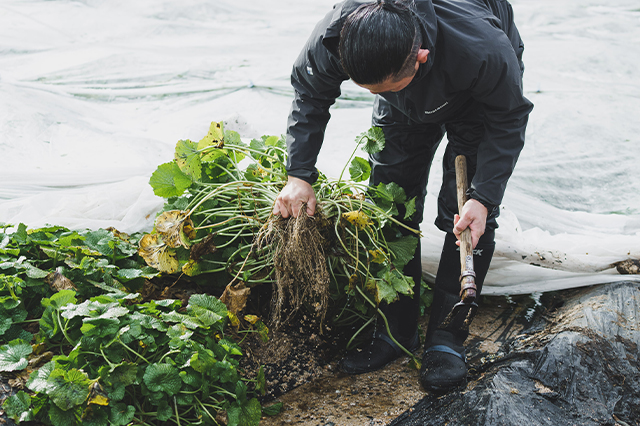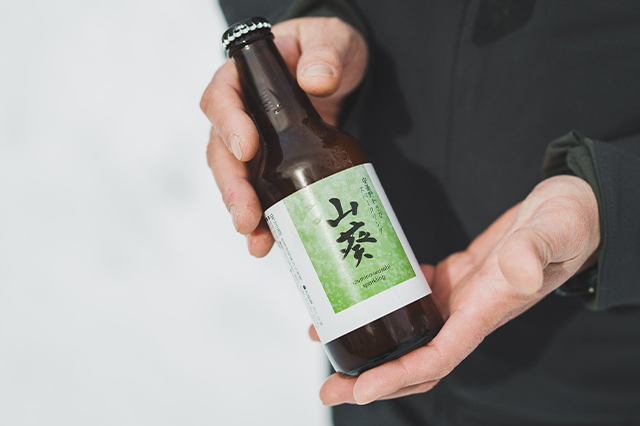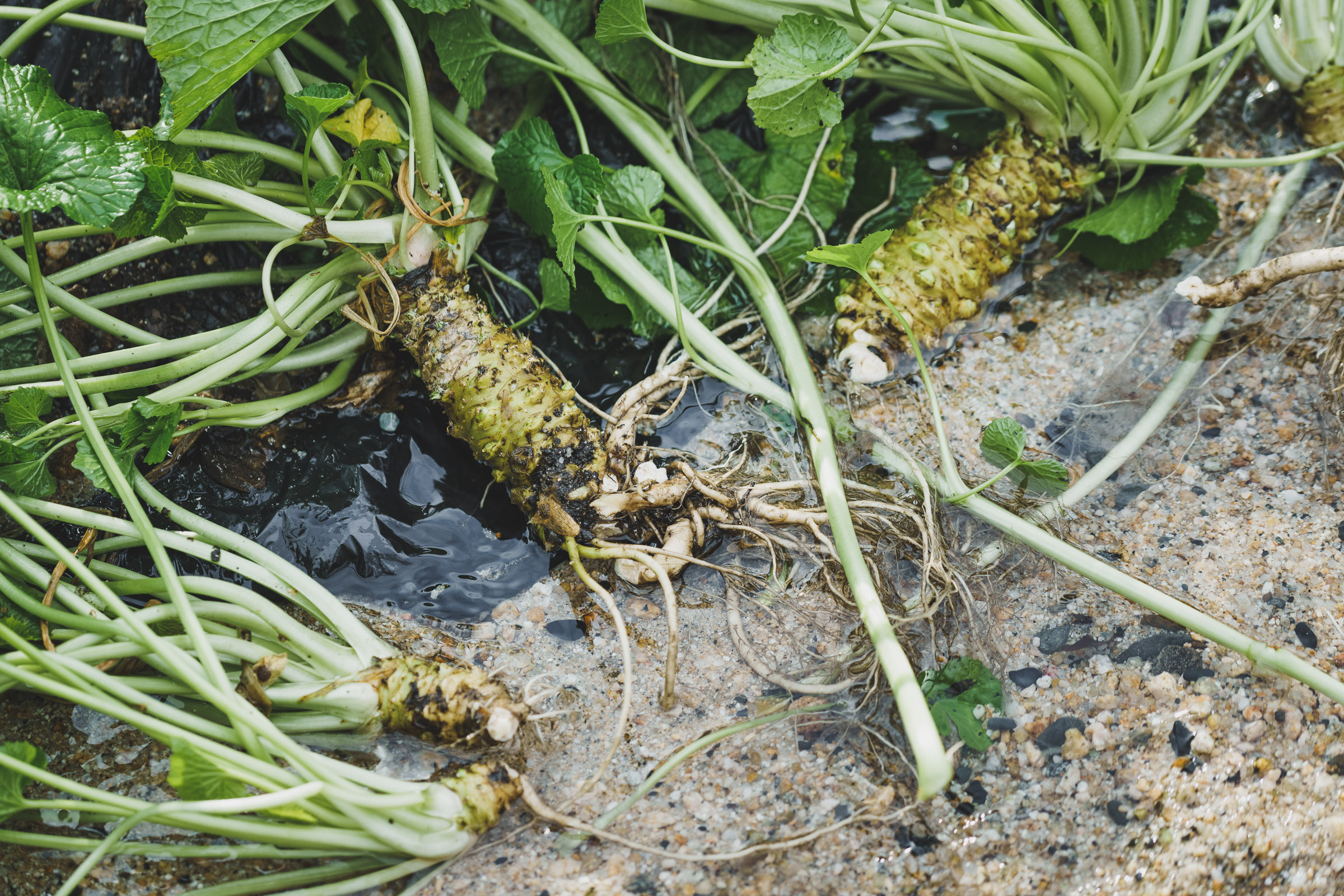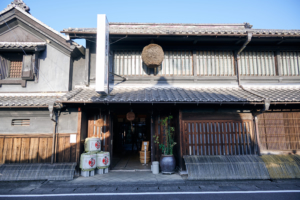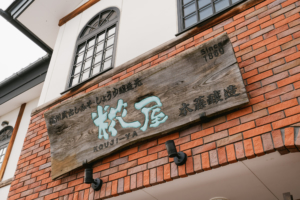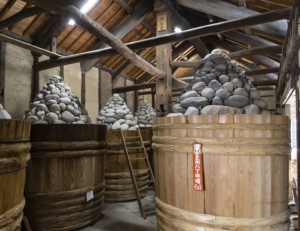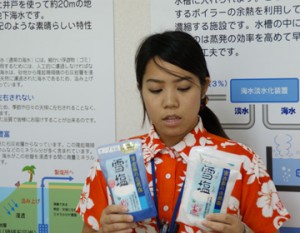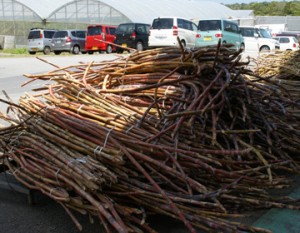Love at first sight for Wasabi to the producer.
Azumino City, Nagano Prefecture, has an abundance of subsoil water from the abundant melting snow of the Northern Alps. This town boasts the nation’s largest production of one of its specialties. It is wasabi, a spice that is inseparable from the Japanese diet.
Although Shizuoka Prefecture may come to mind when one thinks of wasabi production, Nagano Prefecture is actually number one in terms of production, boasting a share of over 40%. More than 90% of wasabi is produced in Azumino City, which means that nearly half of the nation’s wasabi is actually produced in Azumino.
There are two types of wasabi grown in different ways: “Sawasabi,” the root of which is grated and served with sashimi at restaurants, and “Hata Wasabi,” the stems and leaves of which are used to make commercially available tubs of wasabi paste. In Azumino City, the “Azumino Wasabi Field Springs” that gush forth in the city are one of the best water sources in the prefecture, selected as one of the 100 best water sources by the Ministry of the Environment. The city boasts a daily water flow of approximately 700,000 tons, and the water temperature does not exceed 15°C even in mid-summer, making it a perfect environment for wasabi cultivation, where a constant low water temperature of around 15°C is said to determine the quality of the wasabi.
In this town, there is a man who has attracted the attention of many wasabi farmers. He is the representative of Wasabi-ya Yu, the city’s newest agricultural corporation specializing in wasabi. Originally from Nara Prefecture, Matsumoto moved to Hakuba Village in Nagano Prefecture at the age of 20 to pursue a life centered on snowboarding. Since then, she spent her days snowboarding, working as a cook at an accommodation facility near the slopes in the winter and seasonal labor at a farm at the foot of the mountain in the summer. One year, however, while working at a large-scale wasabi farm in Azumino City, Matsumoto began to be attracted to the fascinating and profound nature of wasabi. At the time, one of the wasabi farmers was considering retirement due to old age, which led him to turn around his life of snowboarding and take over the wasabi fields in Azumino City that he owned.
A few years after he started planting, he also re-cultivated the devastated farmland in the surrounding area, gradually expanding his farmland. In 2008, he incorporated the company. Although he is still a young farmer, he has won the Nagano Prefecture Governor’s Award, the highest award at a Nagano Prefecture product fair, and is highly regarded both inside and outside of the prefecture.
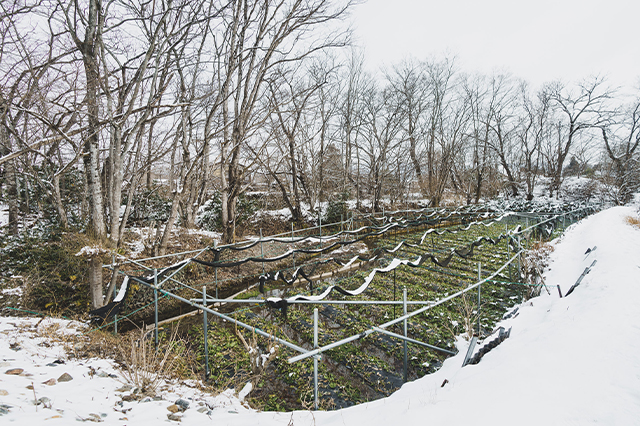
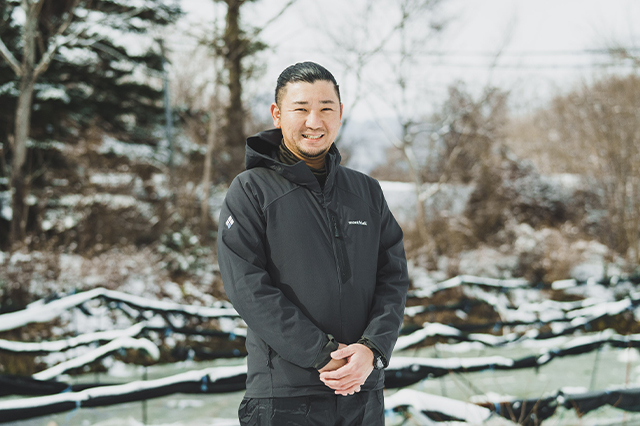
Unique “Wasabi” that brings out the best in food
Mr. Matsumoto mainly grows green-stemmed wasabi, commonly known as “green-stemmed” wasabi. He has tried growing all kinds of wasabi, including “Mazuma,” which is said to be the best wasabi, but he is now growing eight varieties of green-stemmed wasabi, after daily research to find the one that best suits the climate of Azumino. Although often lumped together as “wasabi,” each variety has its own unique pungency and consistency, and in recent years, perhaps due to the influence of diversifying diets and boredom with food, more and more cooks are daring to use different wasabi for different occasions.
For example, “Masamidori” is dark green and has a strong pungency and sweetness, while “Ishidaru,” which is of the green stem type, is lighter in color and has a delicate pungency and refined sweetness.
These characteristics vary greatly depending on the growing environment, which makes them even more interesting, says Matsumoto.
Even in Izu City and Azumino City in Shizuoka Prefecture, both famous for their hydroponically cultivated wasabi, the wasabi fields are completely different.
In Shizuoka Prefecture, the wasabi fields are terraced using a stream flowing from upstream to downstream, whereas in Azumino City, the ground is dug down until spring water flows out, then slightly sloped and ridged to create a flow of spring water.
The wasabi grown in Azumino, which takes advantage of the low-temperature spring water from melting snow, grows slower than wasabi grown in warmer climates, but because it grows slowly over time, it is denser and has a more concentrated flavor. Mr. Matsumoto’s wasabi fields are located in an area of Azumino with particularly low water temperatures and sandy soil, known as “sand making,” which allows the wasabi to grow densely rooted and take even more time to develop, which further increases the concentration of flavor. In addition, the unique climate, with temperatures that change dramatically throughout the year, gives wasabi the stress that gives it its pungent taste, and this is a factor that gives it its complex flavor.
Mr. Matsumoto aims to produce wasabi that makes the most of these regional characteristics.
In the meantime, the original “Azumidori” variety has finally been completed, and the first shipments are scheduled for 2023.
Azumidori, which took five years to develop, is a vigorous variety that grows well in the cold weather of Azumino City. It is characterized by its fresh green color, deep pungency, and moderate stickiness. Mr. Matsumoto is also involved in wasabi production with unconventional ideas, such as developing cream cheese and craft beer using wasabi, etc. As an I-turn farmer, he has seen and experienced wasabi production from various perspectives, and because of this, he actively adopts new things without considering them bad, fusing cutting-edge technology with traditional farming methods. As a result, he has been able to improve the quality of his products.
